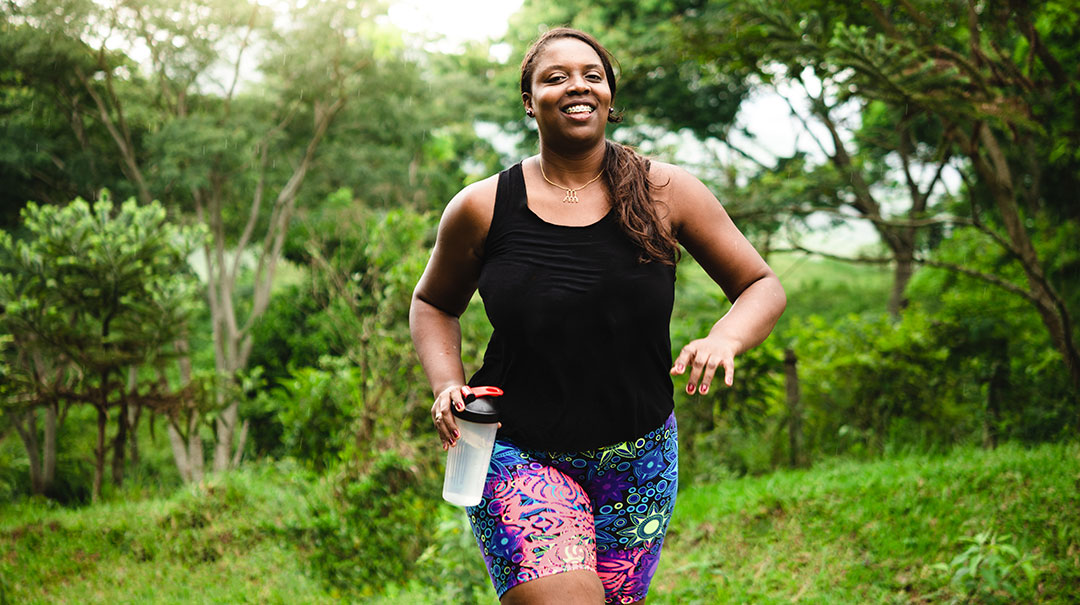Updated March 15, 2020
Regularly exercising can be a difficult routine to accomplish, especially during the winter when harsh conditions can make running or participating in any outdoor sports a feat.
As a result, our bodies often are out of shape and unprepared for new exercise routines or summer activities, such as hiking and swimming. Let’s discuss some ways you can prepare your body heading into this summer.
Preparing for summer exercise.
-
Wear the right shoes.
When you begin exercising again, it’s important you wear a good pair of shoes that fit your feet well. A good pair of shoes can prevent injuries such as ankle sprains and plantar fasciitis. This is especially true when you’re jogging or hiking on tough terrain or uneven surfaces.
I recommend visiting a local shoe store that has a staff who specializes in fitting people into the right shoes based on their arches and the width of their feet. Once you purchase shoes that work well for you, replace them every 300 miles or three months—whichever comes first—as this is when shoes generally lose their cushioning and support.
-
Slowly ramp up your exercise routine.
When you begin exercising, it’s important not to do too much right away. If you ramp up too quickly, you can overuse joints and muscles, which can result in a variety of sprains, tears, and stress fractures. Every year, we see this in people who were sedentary before beginning a sudden and strenuous exercise routine.
Try increasing what you’re doing—whether it’s jogging, playing basketball, or hiking—by about 10 percent each week. This will allow your body time to adjust to the exercise and steadily get in shape.
-
Have an annual exam.
Annual or physical exams are a great way to have your overall health examined. If you opt for a physical exam prior to summertime, you can ensure your health is good enough to begin an exercise routine. At the same time, your doctor can inform you about any exercise limitations you should consider. This is especially important if you have any history of heart disease. Your doctor may recommend you begin cardiac rehab, an outpatient program which combines exercise and education to help you improve your heart and overall health.
-
Stay hydrated.
Keeping your body hydrated is essential to good health, and in the summer when you sweat more, it can be more difficult to stay hydrated. Dehydration can lead to health implications such as:
- Feeling tired or fatigued
- Increased risk of falls
- Kidney failure
- Low blood pressure
A good way to know whether you’re dehydrated is to monitor your urine. If it becomes dark yellow, you’re dehydrated. Try to drink about a half-gallon of water every day. Because you lose sodium when you sweat, it’s important to consume electrolytes. I recommend avoiding sugary sports drinks and opting for electrolyte-infused water or packets of electrolytes that you can stir into your water.
Did you suffer an injury?
When you’re exercising, it’s normal to experience muscle or joint soreness. However, if the soreness steadily gets worse and doesn’t improve after you stretch and warm up, you should speak to your doctor as you might have an injury, such as a sprain, strain, tear, or arthritis. Moreover, swelling before and after exercise is a sound indicator that you have suffered an injury.
Back pain is one of the most common patient complaints. You can typically improve back pain through strength training. If you need help with strength training, speak to your doctor about visiting a physical therapist. If your back pain becomes worse with exercise or causes pain, numbness, or tingling down your leg, make sure to speak to your doctor.
Some people believe dynamic warm-up stretching can help prevent injury, but not enough research has been done to confirm this. Dynamic stretching does improve performance, as it increases the power, flexibility, and range of motion of your muscles. Dynamic stretches can include high knees and leg extensions. Learn more dynamic warm-up stretches via Runner’s World, an online website that specializes in exercise advice.
Whether you’re ramping back up your exercise routine from months ago or beginning one for the first time in years, it’s important to do so carefully. Make sure to take these tips into consideration when you begin exercising and speak to your doctor if you have any questions.
We believe that inside every human body, lives a human being. It's how we treat people.
Learn More

